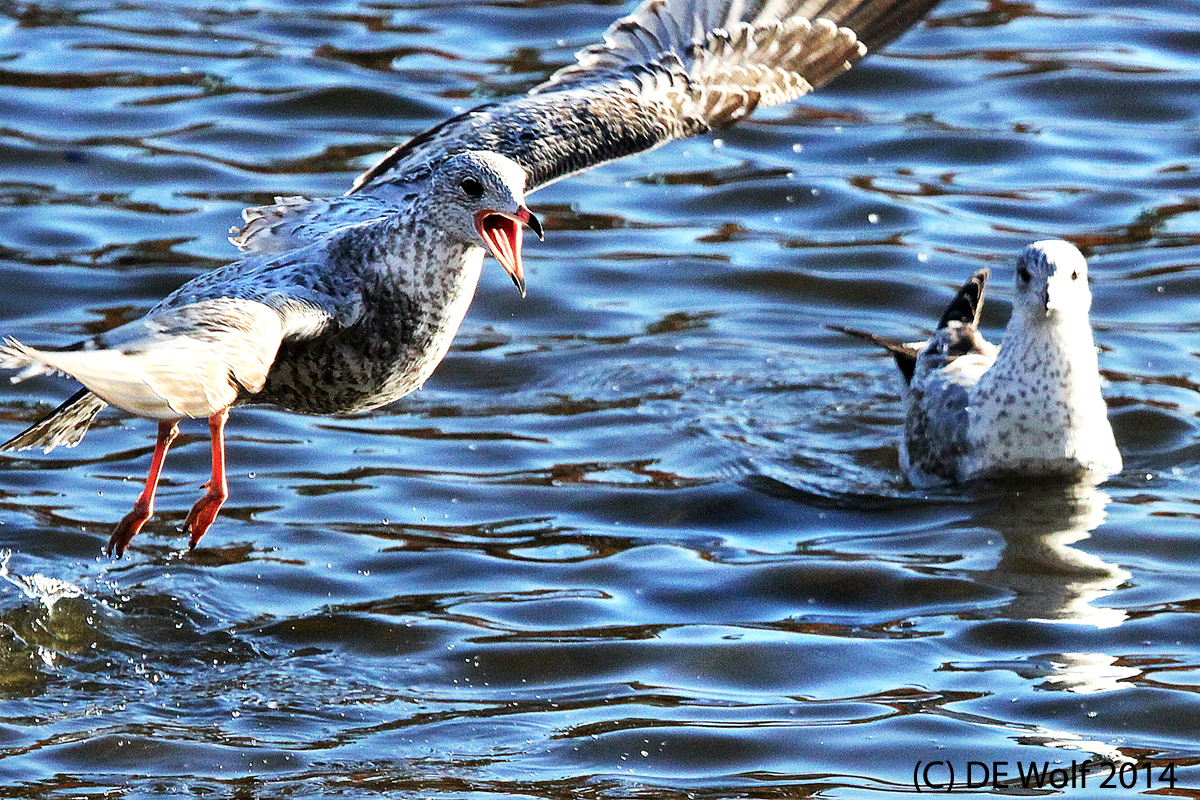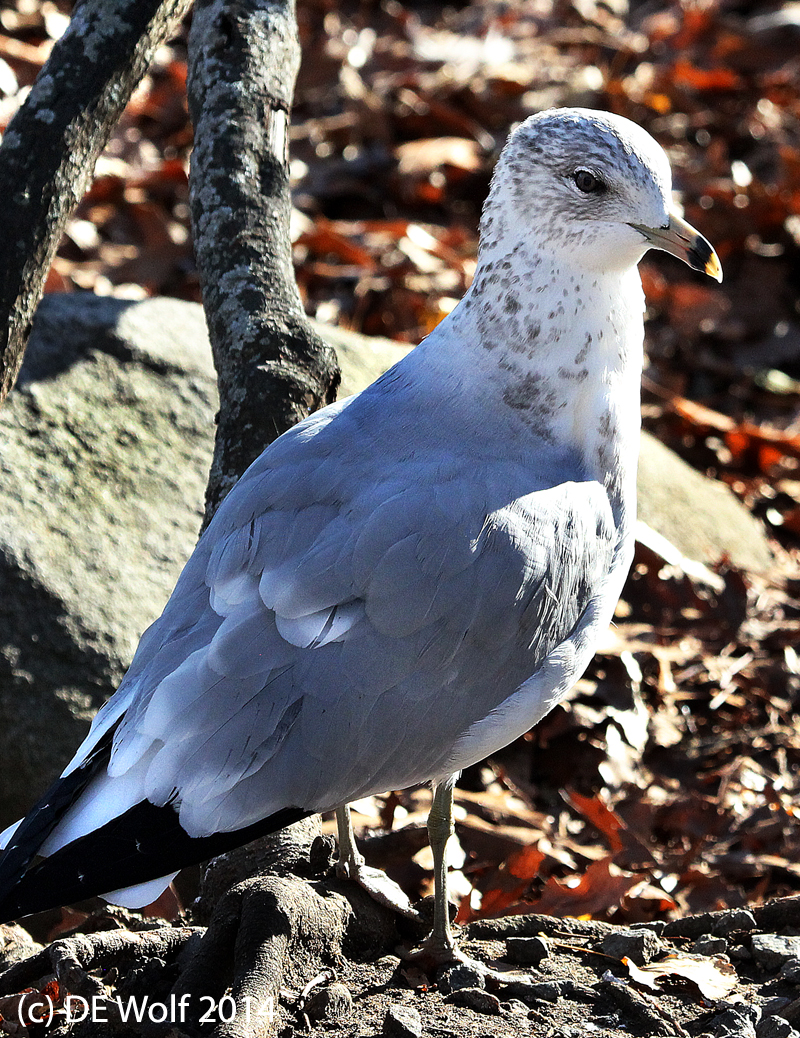I decided that I have been pretty lazy about lens choice in my bird photography. I have been carrying my 70-200 mm zoom rather than my big lens 100 – 400 mm. So this past Saturday, I planned a little excursion to a spot in Marlborough, MA where there are lots of water birds and where children like to go and “feed the duckies,” thinking I would get some praactive with the larger and nmore appropriate lens. I mounted my lens to my monopod and went out and snapped pictures gleefully.
I was photographing a swan, which will be the subject of tomorrow’s post. The swan was gliding along and came onto the turf of a bunch of juvenile delinquent herring gulls (Larus argentatus), who basically got very upset about the incursion and attacked the swan. The swan however was essentially nonplussed and could care less. But I did get the image of Figure 1 showing a gull in mid aerial attack. The coloring of the gull suggests that it is a second winter juvenile. You can also see water droplets thrown up by gull fury and captured mid air. I have framed it with another gull out of focus and floating on the water on the opposite side of the image. This to create an intentional contrast. I thought that for contrast I would also post a more tranquil gull resting very close to me on the shore.
This lens is wonderful for bird photography, and I happily find myself often pulling in the lens. Literally on the Canon EF100-400 f/4.5 – 5.6L IS USM lens, it’s pull and slide rather than turn to change focal length. I just keep focusing on the eyes and shooting every time I get or anticipate a pose that I like!
Figure 1 – Canon T2i with EF100-400mm f/4.5-5.6L IS USM at 260 mm, ISO 1600 aperture-priority AE mode, 1/1600th sec at f/8.0 with no exposure compensation, monopod mount, IS 1 engaged.


